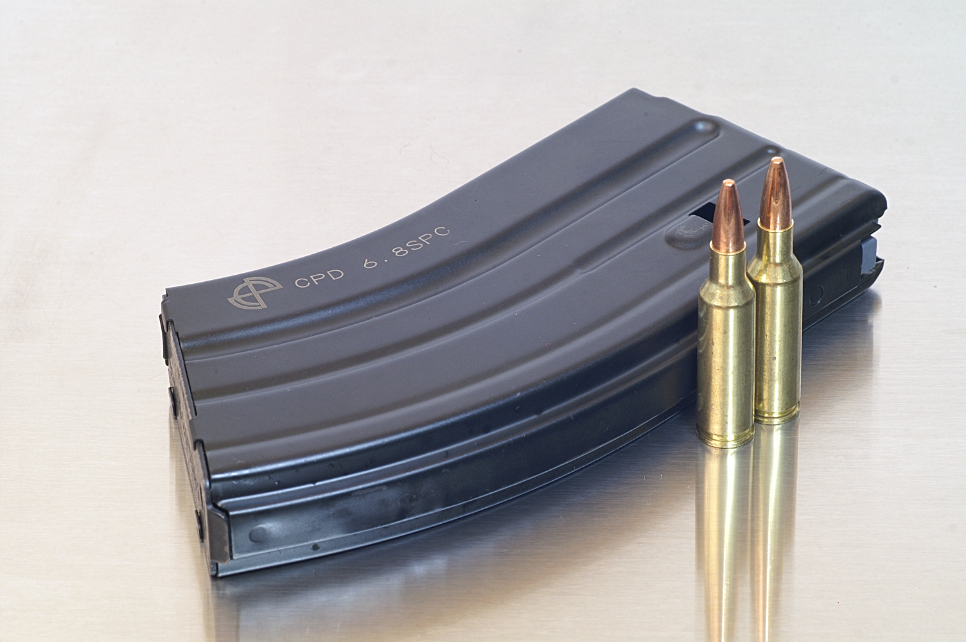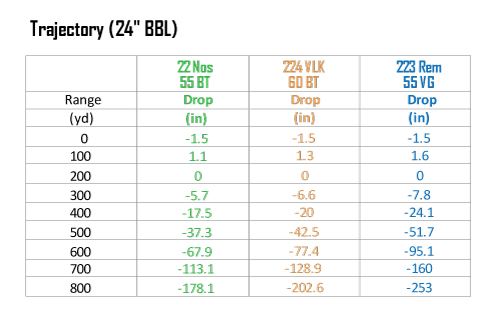Hot topic! Zediker takes a look at 22 Nosler and .224 Valkyrie, two rounds that set out to maximize “sub-caliber” performance. READ ON

Glen Zediker
Last time I nutshelled the history of the .223 Remington and suggested that round, and its 5.56mm NATO chambering in the “new” M16 was the start of the “sub-caliber uprising.” By that I mean in popularity ( Also as mentioned last time, there’s zero doubt that the motivation behind companies like Sierra developing better .224 caliber bullets came from military shooting team needs to use 5.56 in competition. We, pretty much, ended up with better bullets than the .223 Rem. could exploit.
Moving forward 55 years or so now two hot-rodded 22s seek to fully exploit the best of these bullets: 22 Nosler and .224 Valkyrie.
22 Nosler
What it is, is another way to stuff more into an AR15 upper and it’s impressive. 25-percent more case capacity compared to .223 Rem., which translates to solid +300 fps gains — close to a .22-.250. And anyone who doesn’t think .22-.250 is impressive is beyond me and mine. “Conversion” from a conventional .223 Rem. parts set takes a 6.8 SPC magazine and a new barrel with the new chambering, and you’re good to go. It’s a rebated rim so the case head stays at the .223-standard .378, and has same rim thickness, so no new bolt needed. It’s kind of a stretched and necked-down 6.8 SPC, and it’s the same overall case length as .223 Rem. The extra capacity comes from a .420 body diameter, supplemented also by its 30-degree shoulder. Unlike the other Nosler-brand cartridges which came off a .404 Jeffery, there’s no parent case for this one. Currently, brass has to come from Nosler. That’s a good thing. But it’s not cheap. Nosler makes great brass; it’s prepped and ready to load out of its box. It’s become my go-to brass for .223 Rem. when it matters.

22 Nosler is an exciting thing, to me, because it’s a truly new cartridge that lets someone start off fresh with a SAAMI-standard-backed round that is significantly stouter than .223 Rem.
The variety of .224-caliber bullets make it flexible for all the uses a higher-speed round can be put to, including surely as a hunting cartridge, and, no doubt, as a paper puncher. As suggested, it’s pretty much a .22-.250. Even though I like the “shorter-fatter” direction in cartridges to optimize bullet seating architecture to optimize accuracy, 22 Nosler, for me, hasn’t shot one bit worse than .223 Rem., and dang sho leaves a more substantial contrail. Barrel life is going to be significantly shorter than .223 Rem. and it won’t be to the tune of the 25-percent increase in capacity relating to 25-percent shorter life; it’s more like 50-percent, at best. Trades. Maybe 3000 tops.

.224 Valkyrie
About one year after the 22 Nosler, Federal countered with its proprietary creation. (These were each released at a SHOT Show.) At this brief moment in time, 2018, it’s the round that’s getting the biggest following amongst the higher-22-velocity seekers.

Valkyrie is based on the 6.8 SPC. It has a 1.600-inch case length, so is shorter than .223 Rem. or 22 Nosler. That’s good! It uses the same .422 bolt face as SPC, so that’s a needed part for a conversion. As with the Nos. it needs an SPC magazine.
Both the Nos. and the Valkyrie are well suited to handle the biggest of the .224 bullets, and, according to its maker, the Valkyrie was expressly intended to launch the 90-grain-range bullets. Given that, Valkyrie barrels tend to be 1-7 twist. That’s not “enough,” in my experience, and more about that soon enough.
So, which is better?
YES!
I like 22 Nosler. It gives the most speed. That’s pretty much the whole idea behind either one. There’s been some said about the ups and downs of the bolt face differences. The smaller .378 is a stronger bolt, but there’s more bolt thrust effect from the more powerful 22 Nosler, and that’s mostly on the case. I can’t see anything I’ve heard being a problem. I’ve not had issues. The Valkyrie case is shorter, and, as said, that is an advantage with longer bullets because the bullet doesn’t get seated as deeply into the case to end up at the same overall round length. That’s exactly in keeping with the “accuracy architecture” as was shown with the article on PPC.

Bottom-line, though, Valkyrie is an easier investment. Component prices (and availability options) are radically better. I think that for someone looking to explore the far end of the shooting range and ding some steel plates at 500 yards, the .224 Valkyrie would be my recommendation.

But it’s not just nearly that simple! More about why, and more cartridges thrown in to add to the confusion, next time.
Check out components at Midsouth HERE for Valkyrie and HERE for 22 Nosler.
The preceding is a specially-adapted excerpt from Glen’s newest book, America’s Gun: The Practical AR15. Check it out HERE!
Glen’s books, Handloading For Competition and Top-Grade Ammo, are available at Midsouth HERE. For more information about other books by Glen, visit ZedikerPublishing.com








